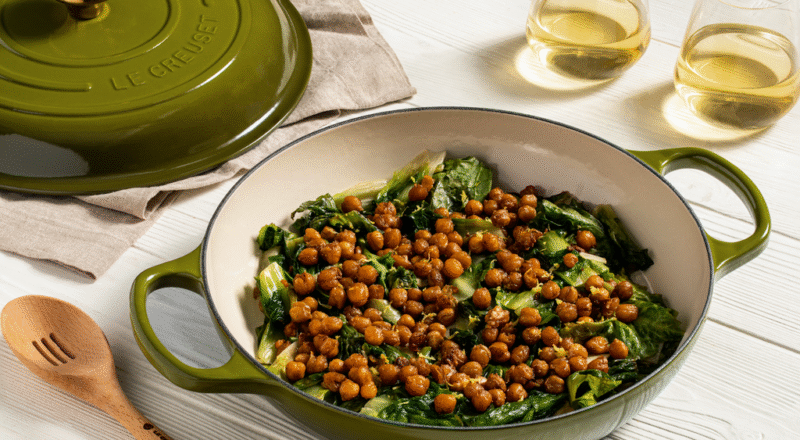When it comes to choosing between a cast iron braiser and a stock pot, many cooking enthusiasts find themselves at a crossroads. Both these kitchen staples are essential in their own right, but when it comes to making the right choice, understanding their differences can be a game-changer. In this article, we will explore the nuances of both, helping you make an informed decision for your cooking needs.

Understanding the Basics
What is a Cast Iron Braiser?
A cast iron braiser is a versatile cooking tool known for its ability to transition seamlessly from stovetop to oven. It is typically wider and shallower than a stock pot, with a heavy lid that aids in the even distribution of heat. This makes it perfect for slow cooking, braising meats, and even baking.
What is a Stock Pot?
A stock pot, on the other hand, is a deep pot designed for making stocks, soups, and stews. It is generally taller and narrower than a braiser, allowing for more liquid to be used without the risk of boiling over. The design is ideal for cooking large batches of liquid-based dishes.
Key Differences
Design and Structure
The primary difference between a cast iron braiser vs stock pot lies in their design. The braiser’s wide base is perfect for browning and reducing sauces, while the stock pot’s height is suited for boiling and simmering.
Material and Heat Retention
Cast iron is renowned for its heat retention properties, allowing the braiser to maintain a consistent temperature. In contrast, stock pots are often made from stainless steel or aluminum, which heats quickly and is more responsive to temperature changes.
Cooking Techniques
Best Uses for a Cast Iron Braiser
The braiser is ideal for dishes that require browning followed by slow cooking. It’s perfect for recipes like coq au vin, pot roast, or even a one-pot pasta.
Best Uses for a Stock Pot
Stock pots excel in preparing large quantities of liquid-based meals. They are perfect for boiling pasta, simmering soups, or cooking a large batch of broth.
Pros and Cons
Advantages of a Cast Iron Braiser
The braiser’s ability to maintain heat makes it excellent for slow cooking. Its versatility allows it to be used for a wide range of dishes, from searing to baking. Additionally, it can serve as a serving dish due to its aesthetic appeal.
Disadvantages of a Cast Iron Braiser
However, the braiser is heavy and may not be suitable for those who prefer lightweight cookware. It also requires regular maintenance to prevent rusting, as discussed in rust prevention tips.
Advantages of a Stock Pot
Stock pots are lighter and easier to handle. They are excellent for high-volume cooking and can be found in various materials to suit different preferences.
Disadvantages of a Stock Pot
On the downside, stock pots do not retain heat as well as cast iron, making them less ideal for slow-cooked dishes. They also lack the versatility of a braiser.
Making the Right Choice
Consider Your Cooking Needs
When deciding between a cast iron braiser vs stock pot, consider what types of dishes you cook most often. If you enjoy a variety of cooking styles, a braiser might be the better choice. For those who primarily make soups and stocks, a stock pot is the way to go.
Space and Storage
Both pieces of cookware require ample storage space. Consider your kitchen space and how often you will use each item. A comprehensive guide to batch cooking with a braiser might help you utilize it more effectively.
Conclusion
In the debate of cast iron braiser vs stock pot, the choice ultimately depends on your individual cooking habits and preferences. Both have their unique strengths and can complement each other in a well-rounded kitchen arsenal. For more in-depth reviews, you might want to check out this informative guide on braisers.

FAQ Section
Can I use a cast iron braiser for making soups?
While a braiser can be used for soups, its shallow design is less optimal than a stock pot, which is specifically designed for liquid-based dishes.
Is a stock pot good for searing meat?
A stock pot is not ideal for searing due to its narrow base. A braiser or frying pan would be more suitable for this task, as explained in this comparison with frying pans.
How do I care for my cast iron braiser?
Regular seasoning and proper cleaning are essential. For detailed instructions, refer to this rust prevention guide.
This article contains affiliate links. We may earn a commission at no extra cost to you.

